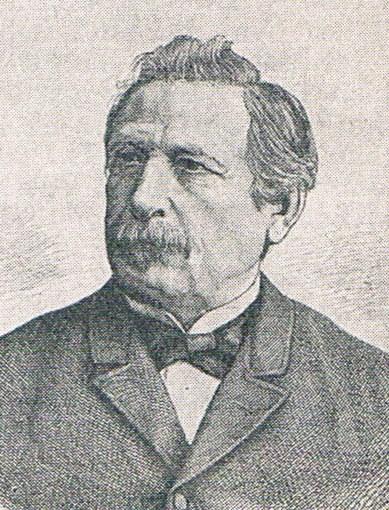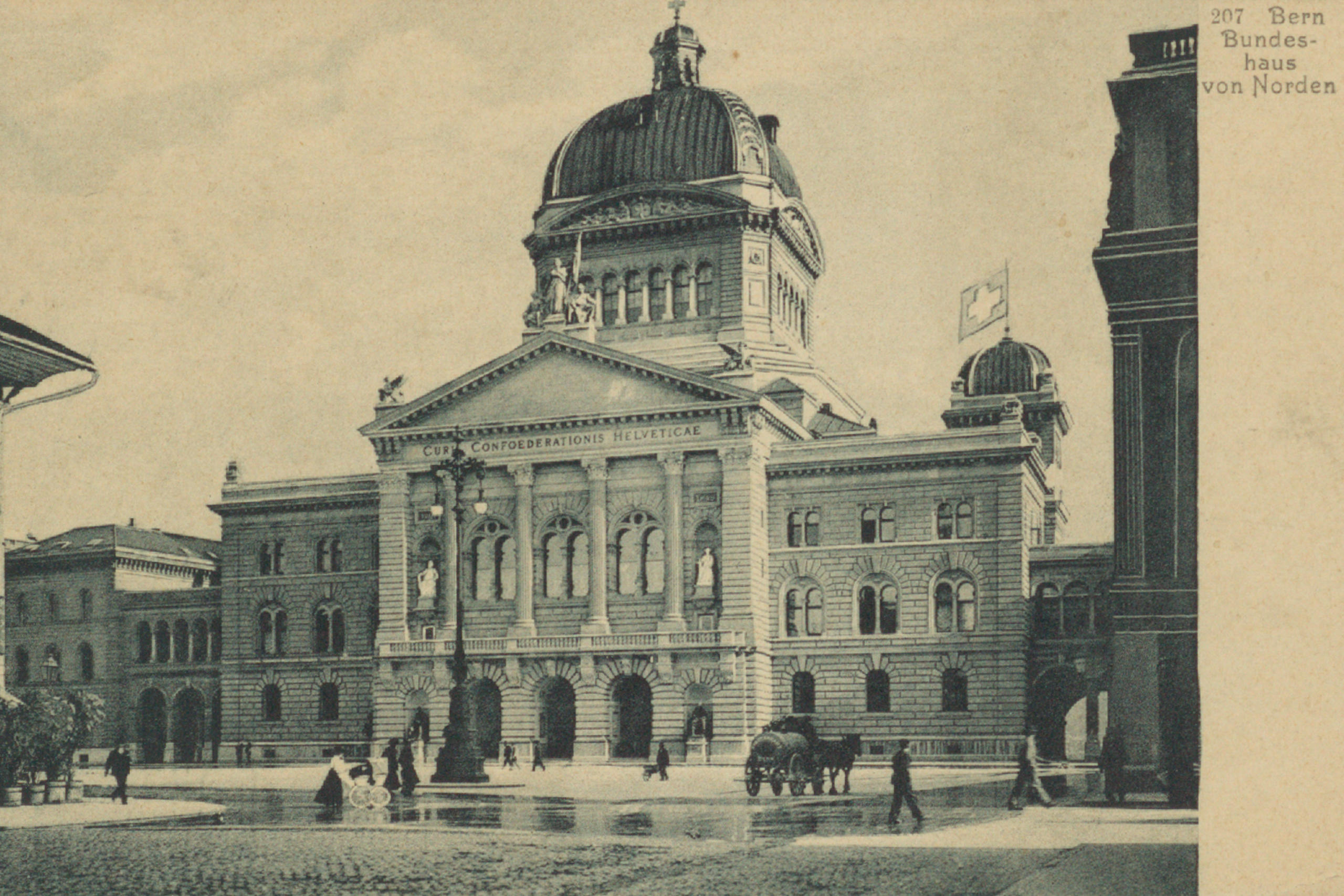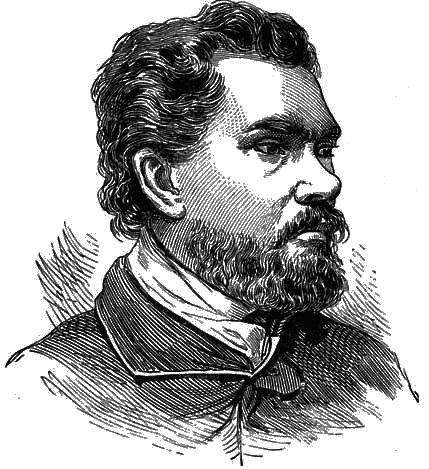Did terrorists once plot to blow up the Swiss government?

Was it a real anarchist conspiracy or a fabrication by a lone German hairdresser? In the first part of a four-part series telling the little-known story of anarchist attacks in Switzerland, we look at a 19th century plot to blow up the federal government in Bern.
As Swiss president Karl Schenk sorted through his mail on January 26, 1885, he got a big fright. An anonymous letter warned that anarchists were planning to “blow up the government buildings during a plenary session of the federal cabinet” .
It said that 17 men had volunteered to “do the terrible job” , there were supplies of dynamite and a timer in place, and that there were enough explosives on hand “to destroy Bern” .
The writer, who signed himself “Number 5” , was apparently a repentant terrorist. “I am horrified at the thought of being an accomplice to this terrible crime,” he wrote, “so at the urging of my dear wife, I am making this confession.” He finished with this recommendation: “Have the government building guarded day and night, and do not let unknown persons in – but be careful, because all comrades are provided with weapons and sulphuric acid.”

Attacks on European leaders
Schenk may well have found the threat plausible, given numerous deadly attacks on political leaders and crowned heads of state in Europe in preceding years. Most of the attackers came from “Propaganda by the Deed” , an ideological tendency within anarchism that advocated changing society by violent means. Whereas the first assassins used knives and guns, later anarchists started using bombs made of dynamite, which Alfred Nobel had patented in 1867.
In October 1878 King Alfonso XII of Spain was shot at, a month later King Umberto I of Italy was wounded in a knife attack, and in 1881 Czar Alexander II died in a bomb attack. German Kaiser Wilhelm I had survived no less than three assassination attempts since 1878. He likely only survived the last one, a bomb attack, because the bomb had a damp fuse and failed to explode.
Switzerland had been spared the violence so far, but it was indirectly involved to a significant extent. Due to its liberal asylum policy it became a refuge for revolutionaries on the run, most of them from Germany, France, Italy and Russia, who carried on the armed struggle from neutral Switzerland.
Since freedom of the press was constitutionally guaranteed in Switzerland from 1848, they were also able to print revolutionary tracts and periodicals which they then smuggled into their countries of origin. So it was not a coincidence that the main mouthpieces of militant anarchism, Freiheit (Freedom) and L’Avant-Garde, were started in Switzerland. Both spoke of the “need for revolution” and preached violent action as a legitimate defence against exploitation, repression and hypocrisy.

Possible vengeance?
Schenk must also have found the timing of the anonymous letter disquieting, since this could be vengeance for the fate of anarchists who had links to Switzerland. Just a month before, the anarchist Friedrich August Reinsdorf, who was the main instigator of the attack on Wilhelm I, had been sentenced to death in Germany. He had spent four years in Switzerland and was well-connected in the anarchist milieu there.

The plan might also have to do with the fate of the German anarchist Hermann Stellmacher and the Austrian Anton Kammerer. They had lived in Switzerland, before carrying out a series of political murders in other countries, for which a court in Vienna sentenced them to death in September 1884. Since then the movement had been glorifying them as “martyrs of social revolution”. And the newspaper Freiheit openly called for vengeance. “There will be no mercy for those who sent Stellmacher to the gallows,” it warned. “His death must be avenged in blood.“
“Switzerland cannot escape”
Six days later the Swiss president received another anonymous letter. The first had come from St Gallen, where Stellmacher had lived, but this one had been posted in Frauenfeld. Yet it clearly came from the same hand and repeated the same warning.
On February 4 a further letter arrived from Winterthur threatening that the “blowing up of the federal building” would “inevitably happen this month”. A fourth letter said that a letter from the conspirators had been deposited in a post office near Bern. On investigating, police found a map and detailed instructions as to how dynamite was to be smuggled into the federal building.
Finally, on February 21, Freiheit, which was now being printed in London, issued a warning. “In England the dynamite is doing its powerful work,” it said. “Switzerland cannot escape us.” It said that anarchists would soon be “ploughing the earth” in the place where the government buildings stood.
Wave of arrests
At dawn the next day, 24 foreign anarchists in Bern and 7 in St Gallen were arrested and their houses searched. There were further arrests in other major centres. Police seized large quantities of publications, propaganda leaflets and private correspondence.
In the meantime, the anonymous warning letters kept coming, first from Winterthur, then one from Paris. On March 12 there was even a letter from New York. The anonymous writer said that “a respectably-dressed German with a blond beard and whiskers, rather tall and powerfully built” would be carrying out the bomb attack on the federal building. The attacker would carry the “explosive device” in a small bag, “or perhaps even under his hat”.
Then another anonymous letter said a Swiss anarchist group had decided to kill all government ministers and members of both houses of parliament, “blowing them to hell with dynamite” .
Case solved – or was it?
Then a local policeman in St Gallen recognised the handwriting in several of the letters as belonging to Wilhelm Huft, a German hairdresser who occasionally wrote for the anarchist papers. On March 31, 1885, Huft was arrested and questioned. He maintained his innocence. After being held in custody for 44 days, he hanged himself in his cell with his own silk handkerchief.
The examining magistrate’s report was scathing about Huft, calling him “a womaniser and spinner of yarns with an over-fertile imagination”. But the report was unable to explain how Huft managed to have the letters sent from different locations in Switzerland, let alone Paris and New York.
The federal government sought to bring closure to the whole affair by deporting 21 anarchists, although none of them were convicted of any criminal wrongdoing. To this day it is anybody’s guess as to whether anarchist groups were seriously thinking of blowing up the federal government building, or whether it was just the fabrication of a lone-wolf anarchist hairdresser.
It inspired the later folksinger Mani Matter to a musical reflection on Swiss democracy that has remained popular in Switzerland ever since he wrote it. Here it is in a version by the Swiss German (dialect) pop group “Züri West” recorded in 1992:
Terrorist violence in Switzerland
A look at Swiss history shows that politically motivated violence was more frequent in the past than we might imagine today.
The first terrorist attack in this country was the assassination of the Austrian Empress Elisabeth, who was stabbed to death in 1898 by an anarchist named Luigi Luccheni. “Sisi”, as she was called, was the first victim of anarchist terror in Switzerland, but she was certainly not the last.
In the early 20th century Switzerland experienced a wave of terrorist attacks. Anarchists raided banks and even a police building in Zurich, tried to blow up trains, blackmailed industrialists, carried out bomb attacks and assassinated political opponents. Most of the attackers were foreign: Russians, Italians, Germans and Austrians who had sought political asylum in Switzerland.
The Swiss government reacted by deporting undesirables and making laws more severe. In 1894, in what became known as the “Anarchists Law”, penalties for crimes using explosives were increased, and preparing for them was made a criminal offence. But Switzerland refrained from tightening its asylum legislation, which ensured ongoing protection for people wanted by police elsewhere.

In compliance with the JTI standards
More: SWI swissinfo.ch certified by the Journalism Trust Initiative










You can find an overview of ongoing debates with our journalists here . Please join us!
If you want to start a conversation about a topic raised in this article or want to report factual errors, email us at english@swissinfo.ch.